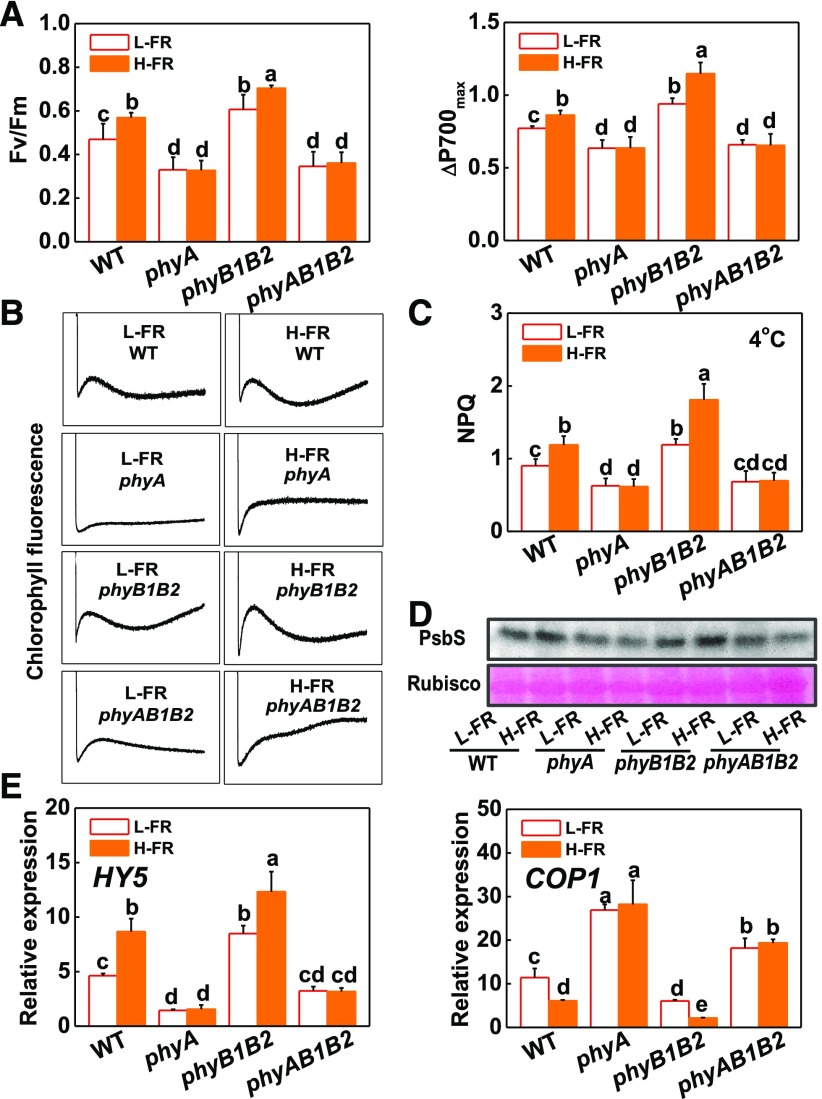Figure 2.
Roles for tomato phytochromes in the light quality regulation of photoinhibition and the expression of light signaling genes (HY5 and COP1). A, Fv/Fm and ΔP700max of the tomato phytochrome mutant plants after exposure to cold at 4°C under l-FR or H-FR light conditions for 7 d. B, Postillumination chlorophyll fluorescence (CEF around PS I) in tomato plants after exposure to cold at 4°C for 3 d under l-FR and H-FR conditions. C and D, Changes of NPQ (C) and PsbS protein (D) in wild-type and phytochrome mutant plants exposed for either 3 d or 1 d to cold stress (at 4°C) under l-FR and H-FR light conditions. E, Levels of HY5 and COP1 transcripts at 6 h after tomato phytochrome mutants were exposed to 4°C under l-FR or H-FR light conditions. For the l-FR and H-FR, R/FR treatments of 1.5 or 0.5, respectively, plants were kept under R (200 μmol m−2 s−1) light conditions, supplemented with different intensities of FR (133 μmol m−2 s−1 and 400 μmol m−2 s−1). Data are the means (±sd) of four biological replicates except for Fv/Fm ratios, which are the means of 15 leaves from independent plants. Different letters indicate significant differences (P < 0.05) according to the Tukey’s test. WT, wild type.

